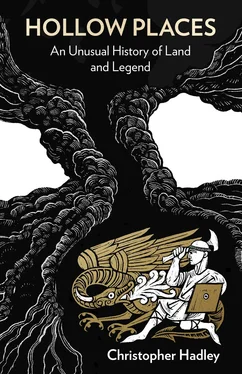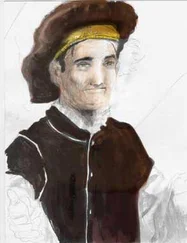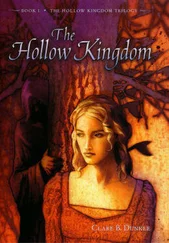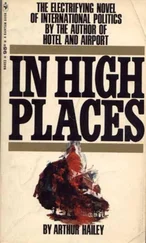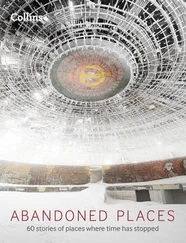The Knowsley Clutterbuck and the Buckler painting also pointed me to all those who had communed with the tomb to create images. Their drawings and paintings, with all their flaws – and the flaws contain their own important insights – helped explain the allure of the tomb and its capacity to conjure stories. The Bucklers and their fellow travellers (the prolific Mr Cole, the tragic Mr Oldfield, the meticulous Mr Anderson) are one of the organising principles of the second part of this book – the part that belongs to the tomb. They have wrestled with it in the shadows, tried to capture it, tried to decipher it. In many ways, the Shonks I tangle with here, is made of hatchings and brushstrokes on parchment: scribbles and shadows and smudges as much as percussions and chisel marks on stone.
… speaks to us from a forgotten world, drowned, mysterious, irrecoverable.
—May McKisack, The Fourteenth Century , 1959
At Barley in Hertfordshire, between the 13th and the 14th milestones, the Cambridge to London road forked south-east towards the small village of Burnt Pelham. The man enduring the sloughs and mires of these notoriously bad roadsone morning in 1743 was the twenty-nine-year-old William Cole. He was destined to be one of the great antiquaries of his age, gouty and ink-stained and only comfortable among old stones or old parchment. A Hogarth paintingfrom around the time of his pilgrimage to Shonks’ tomb shows him standing in the background of a family portait examining old papers, perhaps less at home in the salon than in the muniment room. Would his scant worldliness stand the test of the man he was about to meet? Captain William Wright, the Lord of the Manor of Beeches, was known far and wide as ‘a man of great parts and wickedness’.
‘Great parts and wickedness.’ The phrase is somehow picturesquely archaic without losing any of its force. Wickedness as a noun is stronger than the adjective and especially if applied to a grown man and one in a position of power. ‘Great parts’ is the quiddity of the characterisation. I understand it as great means, but also talents and roles in life. Returning to Cole’s notes I find he considered the captain ‘a man of great natural and acquired understanding [who] knows much more than he cares to put into practise’. I Google ‘Great parts and wickedness’ to see if it is a literary allusion, something Richardson or Fielding wrote of a lecherous squire, but draw a blank. It gave me a type and I hope that it is a fair reckoning, but it is a harsh epitaph for anyone.
I imagine Cole entering the village on a dun-coloured horsethat morning (comfortable carriage rides and the eighteenth-century Enlightenment were a long time coming to the Pelhams). Only thirty miles from London now, and yet according to one observer, it was a place both isolated and secluded and thus proneto superstitious fancies. Later, another would write uncharitably that, ‘The three Pelhams are in a dark state. The people very ignorant.’
1743 was notable as the year that George II became the last English monarch to lead an army into battle, but it would not be surprising if some in Brent Pelham had not heard that George I had died sixteen years earlier, or that his son was now king and embroiled in the quarrel over who should rule Austria.
Captain Wright was infamously slothful. He drove the Reverend Charles Wheatly to devote the page in his ledgerfacing the captain’s tithe payments to passages from scripture. He scribbled a proverb: ‘I went by the field of the slothful and by the vineyard of the man devoid of understanding. And, lo, it was all grown over with thorns, and nettles had covered the face thereof, and the stone wall thereof was broken down.’ (Proverbs 24:30–1). And ends with a psalm: ‘A fruitful land maketh he barren: for the wickedness of them that dwell therein.’ (Psalm 107:34). They are there as judgements and amulets against the captain’s laziness and supposed malignity.
Wright was a notorious miser. When Cole arrived, he was horrified that he had to stable his horse in the dairy and to find only two rooms with glass in the windows. The captain was holed up in one of them with hogs and dogs and litter and lice and ‘four strapping wenches who had nothing to do but obey their master and play at cards with him’. But Cole was willing to stomach the disreputable captain to satisfy his curiosity (and his taste for scandal). Wright was not only the current Lord of the Manor of Beeches, but also of the manors of Greys and Shonks, and, ‘the famous old monument of Piers Shonks … was the only reason which drew me out of my own province of Cambridgeshire into a church of this county,’ wrote Cole in a manuscript now in the British Library.
For all his bad parts, Captain Wright may have helped Cole. Perhaps one of his wenches accompanied him westward along the bridleway to the church and dangled a light while he pored over Shonks’ tomb. It is a Hogarthian composition, the single-minded scholar peering earnestly into the niche of the ancient tomb, the buxom (is that what Cole meant by ‘strapping’?) servant getting in his way, a suspicious sexton lurking in the background, and other stock village characters all arranged to lampoon Cole’s curiosity and the decrepit parish church.
In his prime, Cole would have made a great study for Thomas Rowlandson, who liked to caricature antiquaries. One of his contemporaries wrote of him, ‘With all his odditieshe was a worthy and valuable man.’ It is the oddities we are interested in, and Rowlandson would have captured them as he hunkered over a tomb, measuring the exact length of the nose on the effigy, as Virginia Woolfimagined Cole doing in a letter she wrote to him post mortem, after reading his diaries. He became wedded to historical research while at Clare College Cambridge in the 1730s and later at King’s College, and, after being ordained the year after his visit to Burnt Pelham, he continued to put his research first. Woolf in her letter chastises Cole for not enjoying the eighteenth century. It was said he wanted to escape to the Middle Ages. She speculates that he was disappointed in love, which is why in later life he only loved his dun-coloured horse. He variously referred to his volumes as his wife, his children and his closest friends. By his death in 1789, he had compiled nearly a hundred large volumes of notes, transcripts and sketches, mainly on Cambridgeshire, and with remarkable industry; he told his friend Horace Walpole that ‘You will be astonished at the rapidity of my pen when you observe that this folio of four hundred pages with above a hundred coats of arms and other silly ornaments, was completed in six weeks.’
He rarely showed his papers to anyone. They were bequeathed to the British Museum on the proviso that they would not be opened until twenty years after his death, but even this term of grace was said to have caused some alarm for fear of what he had written about those he disagreed with – particularly anyone who had dared to remove his beloved stained glass from windows. He had no time for modernisers. Cole predicted that posterity might not appreciate the work he had done for it and admitted that he had committed his most private thoughts and much ‘scandalous rubbish’to his papers. They were indeed deplored, when they were finally opened, as licentious and even morally reprehensible for mixing gossip, scandal and his personal prejudices with his antiquarian observations. If the nineteenth century was prurient and unkind to Cole, the early twentieth century found his historical notes, his journals and vast collection of correspondence invaluable and fascinating (especially the tittle-tattle), all written in his beautiful, easily legible hand.
Cole took out his pen and ink that day in 1743 and made the earliest known sketch of the tomb. Like Buckler’s painting, Cole’s sketch was hidden away and forgotten; unlike Buckler’s painting, it is not art. It is a scratching, an aide-memoire, and in both its virtues and flaws reminds me that it is no easy matter to identify the detailed carvings on the tomb, let alone their meaning. He did capture those features that make it such an intriguing and mysterious object: its position in the wall of the nave, the strange inscription above it, and the grey-black marble slab with its extraordinary medieval carvings around which stories had gathered for centuries.
Читать дальше
